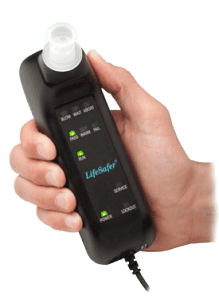 All 50 states in the U.S. have some type of court-ordered ignition interlock device (IID) program for convicted drunk drivers. Many of these programs focus on first-time drunk driving offenders, while other IID programs are reserved for habitual or repeat drunk drivers. Regardless of the DUI/DWI charge a person is facing in court, the cost of an IID is one to keep in consideration for the duration of the sentence. This cost not only increases the likelihood of a DUI/DWI offender to remain sober, but, it also alleviates much of the taxpayer burden associated with a jail sentence.
All 50 states in the U.S. have some type of court-ordered ignition interlock device (IID) program for convicted drunk drivers. Many of these programs focus on first-time drunk driving offenders, while other IID programs are reserved for habitual or repeat drunk drivers. Regardless of the DUI/DWI charge a person is facing in court, the cost of an IID is one to keep in consideration for the duration of the sentence. This cost not only increases the likelihood of a DUI/DWI offender to remain sober, but, it also alleviates much of the taxpayer burden associated with a jail sentence.
The cost of an IID is a combination of several factors, including the installation and maintenance of the device for the duration of the sentence. Also, the cost of an IID can vary depending on the type of IID required by the court or state law. Ignition interlock devices that include a GPS or video monitor can have a higher cost than those without such additions. Many states also regulate the cost of an IID, or offer subsidies to those who cannot afford the cost of installation or maintenance. However, if a person does not have the ability to pay, or does not follow the guidelines of the installation, he or she can face a longer IID time period requirement, or even jail time, adding to the overall cost of the device and conviction.
Despite the costs associated with an IID, the result of the installation and maintenance of these devices is seen on the roads each day. Ignition interlock devices are proven to reduce the rate of repeat drunk driving offenses by 67%. Through following the requirements of the IID sentence, a convicted drunk driver can keep the cost of an IID as low as possible, providing safety to others on the road and a new commitment to driving sober long after the IID is required.

Leave a Reply
You must be logged in to post a comment.